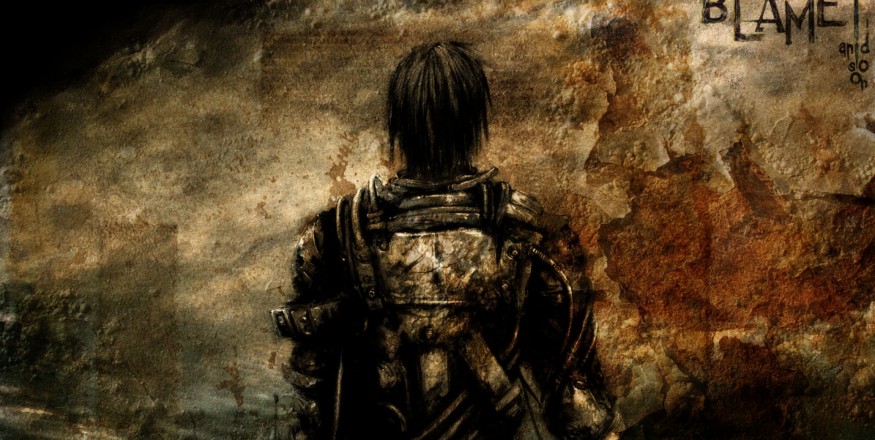The Lesser Key of Solomon, also known as Clavicula Salomonis Regis or Lemegeton, is an anonymous grimoire (or spell book) on demonology. It was compiled in the mid-17th century, mostly from materials a couple of centuries older. It is divided into five books—the Ars Goetia, Ars Theurgia-Goetia, Ars Paulina, Ars Almadel, and Ars Notoria.1111Please respect copyright.PENANAbhzwK1Lsmk
Ars Goetia1111Please respect copyright.PENANAbjcfivye2v
The most obvious source for the Ars Goetia is Johann Weyer's Pseudomonarchia Daemonum in his De praestigiis daemonum. Weyer does not cite, and is unaware of, any other books in the Lemegeton, indicating that the Lemegeton was derived from his work, not the other way around. The order of the spirits was changed between the two, four additional spirits were added to the later work, and one spirit (Pruflas) was omitted. The omission of Pruflas, a mistake that also occurs in an edition of Pseudomonarchia Daemonum cited in Reginald Scot's The Discoverie of Witchcraft, indicates that the Ars Goetia could not have been compiled before 1570. Indeed, it appears that the Ars Goetia is more dependent upon Scot's translation of Weyer than Weyer's work in itself. Additionally, some material was used from Heinrich Cornelius Agrippa's Three Books of Occult Philosophy, the Heptameron by pseudo-Pietro d'Abano, and the Magical Calendar.
Weyer's Officium Spirituum, which is likely related to a 1583 manuscript titled The Office of Spirits, appears to have ultimately been an elaboration on a 15th-century manuscript titled Le Livre des Esperitz (of which 30 of its 47 spirits are nearly identical to spirits in the Ars Goetia).
In a slightly later copy made by Thomas Rudd, this portion was labelled "Liber Malorum Spirituum seu Goetia", and the seals and demons were paired with those of the 72 angels of the Shemhamphorasch, who were intended to protect the conjurer and control the demons he summoned. The angelic names and seals were derived from a manuscript by Blaise de Vigenère, whose papers were also used by Samuel Liddell MacGregor Mathers in his works for the Hermetic Order of the Golden Dawn. Rudd may have derived his copy of Liber Malorum Spirituum from a now-lost work by Johannes Trithemius, who taught Agrippa, who in turn taught Weyer.
This portion of the work was later translated by S. L. MacGregor Mathers and published by Aleister Crowley under the title The Book of the Goetia of Solomon the King. Crowley added some additional invocations previously unrelated to the original work, as well as essays describing the rituals as psychological exploration instead of demon summoning.1111Please respect copyright.PENANAhLhpHINZxd
The Seventy-Two Demons
The demons' names (given below) are taken from the Ars Goetia, which differs in terms of number and ranking from the Pseudomonarchia Daemonum of Weyer. As a result of multiple translations, there are multiple spellings for some of the names, which are given in the articles concerning them.
1) King Bael1111Please respect copyright.PENANAogDrjufXdI
2) Duke Agares1111Please respect copyright.PENANATOAK72jxzj
3) Prince Vassago1111Please respect copyright.PENANA6wbC1rfPVc
4) Marquis Samigina1111Please respect copyright.PENANAkcBvwAuNjT
5) President Marbas1111Please respect copyright.PENANAEAts0kMtdh
6) Duke Valefor1111Please respect copyright.PENANAzoGYX6nqzA
7) Marquis Amon1111Please respect copyright.PENANARxzi4ILCK6
8) Duke Barbatos1111Please respect copyright.PENANAwB0EB8naCJ
9) King Paimon1111Please respect copyright.PENANAT66a06b4j6
10) President Buer1111Please respect copyright.PENANAg9DLM0hdd9
11) Duke Gusion1111Please respect copyright.PENANADQHlwSkVlZ
12) Prince Sitri1111Please respect copyright.PENANA6txDjxWFwe
13) King Beleth1111Please respect copyright.PENANAJ1ERiydgES
14) Marquis Leraje1111Please respect copyright.PENANAIjF83LJFJs
15) Duke Eligos1111Please respect copyright.PENANA3IEvz4FMek
16) Duke Zepar1111Please respect copyright.PENANAieDWf00xDX
17) Count/President Botis1111Please respect copyright.PENANAKdqug7FAWv
18) Duke Bathin1111Please respect copyright.PENANAxQZSCSNTuh
19) Duke Sallos1111Please respect copyright.PENANA233ix7wgki
20) King Purson1111Please respect copyright.PENANAV3R7ojKROG
21) Count/President Marax1111Please respect copyright.PENANATRekDV6ewo
22) Count/Prince Ipos1111Please respect copyright.PENANAeg4ZBuzwz0
23) Duke Aim1111Please respect copyright.PENANArDKMNaP4Bq
24) Marquis Naberius1111Please respect copyright.PENANAPHqw5RcLew
25) Count/President Glasya-Labolas1111Please respect copyright.PENANAtgx9p5Jm3i
26) Duke Buné1111Please respect copyright.PENANAYPt1L4mxmL
27) Marquis/Count Ronové1111Please respect copyright.PENANAJlQQ4BWPVV
28) Duke Berith1111Please respect copyright.PENANA6exQOOxKxo
29) Duke Astaroth1111Please respect copyright.PENANAWSPg6wTOHB
30) Marquis Forneus1111Please respect copyright.PENANAsI3AR2A46L
31) President Foras1111Please respect copyright.PENANAYJ07eRKmak
32) King Asmoday1111Please respect copyright.PENANAp52DNP2yQY
33) Prince/President Gäap1111Please respect copyright.PENANAri77rlYdQG
34) Count Furfur1111Please respect copyright.PENANAJ3mi6tO4kq
35) Marquis Marchosias1111Please respect copyright.PENANAXZVAd7AOpE
36) Prince Stolas1111Please respect copyright.PENANAkhluK819jt
37) Marquis Phenex1111Please respect copyright.PENANAxO29UKoYbX
38) Count Halphas1111Please respect copyright.PENANABwblljUWFI
39) President Malphas1111Please respect copyright.PENANAiTlccmgO4o
40) Count Räum1111Please respect copyright.PENANApb0v2VfTcl
41) Duke Focalor1111Please respect copyright.PENANAZ4BNlFeqCq
42) Duke Vepar1111Please respect copyright.PENANAh9nl1yY8Os
43) Marquis Sabnock1111Please respect copyright.PENANASaAdR0S3CK
44) Marquis Shax1111Please respect copyright.PENANAMRZ1M7kyUE
45) King/Count Viné1111Please respect copyright.PENANADBw0wYetVH
46) Count Bifrons1111Please respect copyright.PENANATqYDlLkp9P
47) Duke Vual1111Please respect copyright.PENANAdhAgcHwWJQ
48) President Haagenti1111Please respect copyright.PENANAxAsk4mcPCx
49) Duke Crocell1111Please respect copyright.PENANAMeUrlVJYSJ
50) Knight Furcas1111Please respect copyright.PENANAFhiOpVQfk0
51) King Balam1111Please respect copyright.PENANAsn4JT66DW2
52) Duke Alloces1111Please respect copyright.PENANA4KzJQApm1Z
53) President Caim1111Please respect copyright.PENANAzeiQrsziAM
54) Duke/Count Murmur1111Please respect copyright.PENANAEV49LJjUlU
55) Prince Orobas1111Please respect copyright.PENANAgAQF7F3uqI
56) Duke Gremory1111Please respect copyright.PENANA6RlaT4ZnRr
57) President Ose1111Please respect copyright.PENANAYmAI0JajYM
58) President Amy1111Please respect copyright.PENANAC2bcfVCDeH
59) Marquis Orias1111Please respect copyright.PENANApyVxKabpwm
60) Duke Vapula1111Please respect copyright.PENANAESQXZ6tQNr
61) King/President Zagan1111Please respect copyright.PENANAbAC8yJkaaS
62) President Valac1111Please respect copyright.PENANANaQ0jsWgSW
63) Marquis Andras1111Please respect copyright.PENANACpGowGOB88
64) Duke Flauros1111Please respect copyright.PENANAf4zjSTQpT1
65) Marquis Andrealphus1111Please respect copyright.PENANA9xf6VCHejO
66) Marquis Kimaris1111Please respect copyright.PENANApWZIVvcTX5
67) Duke Amdusias1111Please respect copyright.PENANAdcIpmDz7qB
68) King Belial1111Please respect copyright.PENANAWBaX1nUKn6
69) Marquis Decarabia1111Please respect copyright.PENANAukr6gmhtrs
70) Prince Seere1111Please respect copyright.PENANAo0fAlAcpmG
71) Duke Dantalion1111Please respect copyright.PENANAtE4nx40UgA
72) Count Andromalius
The demons are described as being commanded by four kings of the cardinal directions: Amaymon (East), Corson (West), Ziminiar (North), and Gaap (South). A footnote in one variant edition instead lists them as Oriens or Uriens, Paymon or Paymonia, Ariton or Egyn, and Amaymon or Amaimon, alternatively known as Samael, Azazel, Azael, and Mahazael (purportedly their preferred rabbinic names).[10] Agrippa's Occult Philosophy lists the kings of the cardinal directions as Urieus (East), Amaymon (South), Paymon (West), and Egin (North); again providing the alternate names Samuel (i.e. Samael), Azazel, Azael, and Mahazuel. The Magical Calendar lists them as Bael, Moymon, Poymon, and Egin, though Peterson notes that some variant editions instead list '"Asmodel in the East, Amaymon in the South, Paymon in the West, and Aegym in the North"; "Oriens, Paymon, Egyn, and Amaymon"; or "Amodeo [sic] (king of the East), Paymon (king of the West), Egion (king of the North), and Maimon."1111Please respect copyright.PENANAJJWgeKjHt6
Ars Theurgia Goetia1111Please respect copyright.PENANAFL64kYVGGg
The Ars Theurgia Goetia mostly derives from Trithemius's Steganographia, though the seals and order for the spirits are different due to corrupted transmission via manuscript. Rituals not found in Steganographia were added, in some ways conflicting with similar rituals found in the Ars Goetia and Ars Paulina. Most of the spirits summoned are tied to points on a compass, four Emperors tied to the cardinal points (Carnesiel in the East, Amenadiel in the West, Demoriel in the North and Caspiel in the South), sixteen Dukes tied to cardinal points, inter-cardinal points, additional directions between those. There are an additional eleven Wandering Princes, totaling thirty one spirit leaders who each rule several to a few dozen spirits.1111Please respect copyright.PENANAXekFAAUliW
1111Please respect copyright.PENANA3e0bQoXxlJ
Ars Paulina1111Please respect copyright.PENANAuTuJ52jkOE
Derived from book two of Trithemius's Steganographia and from portions of the Heptameron, but purportedly delivered by Paul the Apostle instead of (as claimed by Trithemius) Raziel. Elements from The Magical Calendar, astrological seals by Robert Turner's 1656 translation of Paracelsus's Archidoxes of Magic, and repeated mentions of guns and the year 1641 indicate that this portion was written in the later half of the seventeenth century. Traditions of Paul communicating with heavenly powers are almost as old as Christianity itself, as seen in some interpretations of 2 Corinthians 12:2-4 and the apocryphal Apocalypse of Paul. The Ars Paulina is in turn divided into two books, the first detailing twenty-four angels aligned with the twenty-four hours of the day, the second (derived more from the Heptameron) detailing the 360 spirits of the degrees of the zodiac.1111Please respect copyright.PENANAlbo6BEQwSV
Ars Almadel1111Please respect copyright.PENANAXcjxe46msF
Mentioned by Trithemius and Weyer, the latter of whom claimed an Arabic origin for the work. A 15th-century copy is attested to by Robert Turner, and Hebrew copies were discovered in the 20th century. The Ars Almadel instructs the magician on how to create a wax tablet with specific designs intended to contact angels via scrying.1111Please respect copyright.PENANA36H41MUAHA
Ars Notoria1111Please respect copyright.PENANASI3iqFnEOu
The oldest known portion of the Lemegeton, the Ars Notoria (or Notory Art) was first mentioned by Michael Scot in 1236 (and thus was written earlier). The Ars Notoria contains a series of prayers (related to those in The Sworn Book of Honorius) intended to grant eidetic memory and instantaneous learning to the magician. Some copies and editions of the Lemegeton omit this work entirely; A. E. Waite ignores it completely when describing the Lemegeton. It is also known as the Ars Nova.1111Please respect copyright.PENANA1JTi06IgeC
1111Please respect copyright.PENANAHyork4RcEY
It has also been said to be the origin of Pandora's box and where the seven deadly sins were born.
1 Gula (gluttony)1111Please respect copyright.PENANAXkG4WcM0qk
2 Luxuria (lust, fornication)1111Please respect copyright.PENANAmNoWCd4i0E
3 Avaritia (avarice/greed)1111Please respect copyright.PENANAGpZyhPF1It
4 Superbia (pride, hubris)1111Please respect copyright.PENANAqiGHAmxbBS
5 Invidia (Envy)1111Please respect copyright.PENANABJGaQwSh9c
6 Ira (wrath)1111Please respect copyright.PENANAX7adkoqo5S
7 Acedia (sloth)1111Please respect copyright.PENANANGbmBfgUvr
If you look any further into it, beware your surrounding... You will uncover, the truth.
ns216.73.216.176da2

































